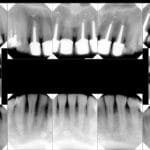After oral surgery, it’s natural to be curious about the dissolvable stitches in your mouth. This comprehensive guide provides valuable insights into the types of stitches, their typical dissolution time, factors affecting the process, post-operative care, and potential complications. Understanding these aspects can contribute to a smoother, more comfortable recovery.
Understanding Dissolvable Stitches
Dissolvable sutures, also known as absorbable sutures, are specifically designed to break down harmlessly in the moist environment of your mouth over time. They play a vital role in closing wounds and promoting healing after procedures like tooth extractions, gum surgery, or other oral surgeries. Think of them as temporary scaffolding, supporting the healing process until your body’s natural repair mechanisms take over.
Types of Dissolvable Sutures and Their Timelines
Several types of dissolvable sutures exist, each with varying dissolution rates:
| Suture Material | Typical Dissolution Time | Common Uses |
|---|---|---|
| Chromic Gut | 10-14 days | Wisdom teeth extractions |
| Polyglycolic Acid (Dexon) | 7-10 days | Soft tissue repairs |
| Polyglactin (Vicryl) | 7-10 days | Similar to Dexon |
| Absorbable Nylon | Up to 14 days | Mucosal closures |
It’s important to note that these are average timelines. Individual experiences can differ. For instance, chromic gut, often used in wisdom tooth extractions, typically lasts around 10-14 days. However, some research suggests variations in these averages depending on individual factors.
Factors Influencing Dissolution Time
The rate at which stitches dissolve isn’t fixed. Several factors can influence the process:
- Suture Material: As illustrated in the table above, different materials break down at different rates.
- Individual Healing: Just as some recover from a cold faster than others, individual healing responses vary, impacting stitch dissolution. A robust immune system might accelerate the breakdown.
- Location of Stitches: Areas exposed to more saliva and movement may experience faster dissolution.
- Oral Hygiene Practices: Maintaining excellent oral hygiene can promote healthy healing and likely influence stitch dissolution.
- Surgical Procedure: The complexity of the procedure can affect healing and, consequently, stitch dissolution. Larger incisions with more stitches may probably take longer to dissolve.
Post-Operative Care: Your Path to Smooth Healing
Proper post-operative care is crucial for optimal healing and can also influence stitch dissolution:
- Gentle Rinsing: Your dentist may recommend gentle rinsing with saltwater or a prescribed antiseptic mouthwash to keep the area clean and minimize infection risk.
- Soft Food Diet: Sticking to soft foods, especially initially, is essential. Avoid hard, crunchy, or spicy foods that could irritate the surgical site and potentially dislodge stitches. When can you eat after stitches in your mouth? provides detailed dietary guidance.
- Careful Brushing: While maintaining regular brushing is vital, exercise extra caution around the stitched area. Can I brush my teeth with stitches in my mouth? offers valuable tips.
Recognizing Normal Dissolution and Potential Concerns
As dissolvable stitches break down, they may loosen, fray, or even change color. This is a normal part of the process. However, be vigilant for any signs of infection, such as increasing pain, swelling, redness, or unusual discharge. Contact your dentist immediately if you notice any of these symptoms.
What to Do if Stitches Don’t Dissolve
Resist the temptation to pull or cut stitches yourself. This can disrupt healing and increase the risk of infection. If your stitches persist beyond the expected timeframe (typically several weeks), schedule a check-up with your dentist. They can safely remove any remaining sutures and ensure proper healing.
Benefits of Dissolvable Stitches
Dissolvable stitches offer several advantages:
- No Removal Necessary: They eliminate the need for an additional appointment for stitch removal, offering convenience, especially for hard-to-reach areas.
- Reduced Infection Risk: Compared to non-dissolvable stitches, they may reduce the risk of infection by minimizing the need for further intervention.
- Accessibility: They are particularly useful for internal stitches in areas where removal would be difficult or uncomfortable.
Navigating Your Recovery Journey
Worried about spreading gum inflammation? Discover the truth about whether gingivitis is contagious and protect your smile. Want to strengthen weakened enamel? Dive into the fascinating world of how to remineralize teeth and unlock the secrets to a healthier, more resilient smile.
Remember, this information is for general knowledge and does not replace professional medical advice. Consult your dentist or oral surgeon for personalized guidance, as individual healing processes and procedures vary. They can address specific concerns and provide the most accurate and up-to-date advice tailored to your needs.

















1 thought on “How Long Do Dissolving Stitches Last in Your Mouth? A Guide to Healing and Aftercare”
Comments are closed.